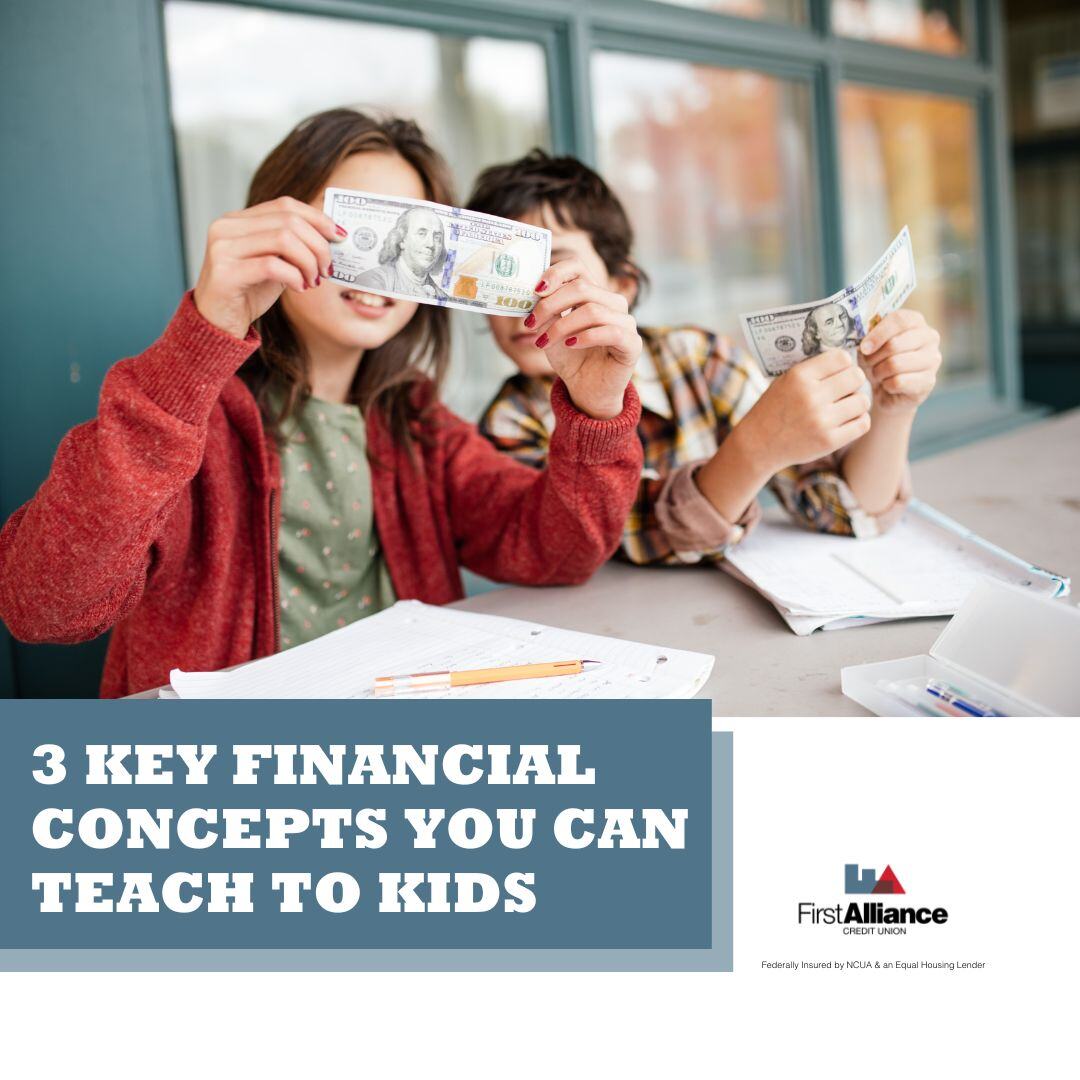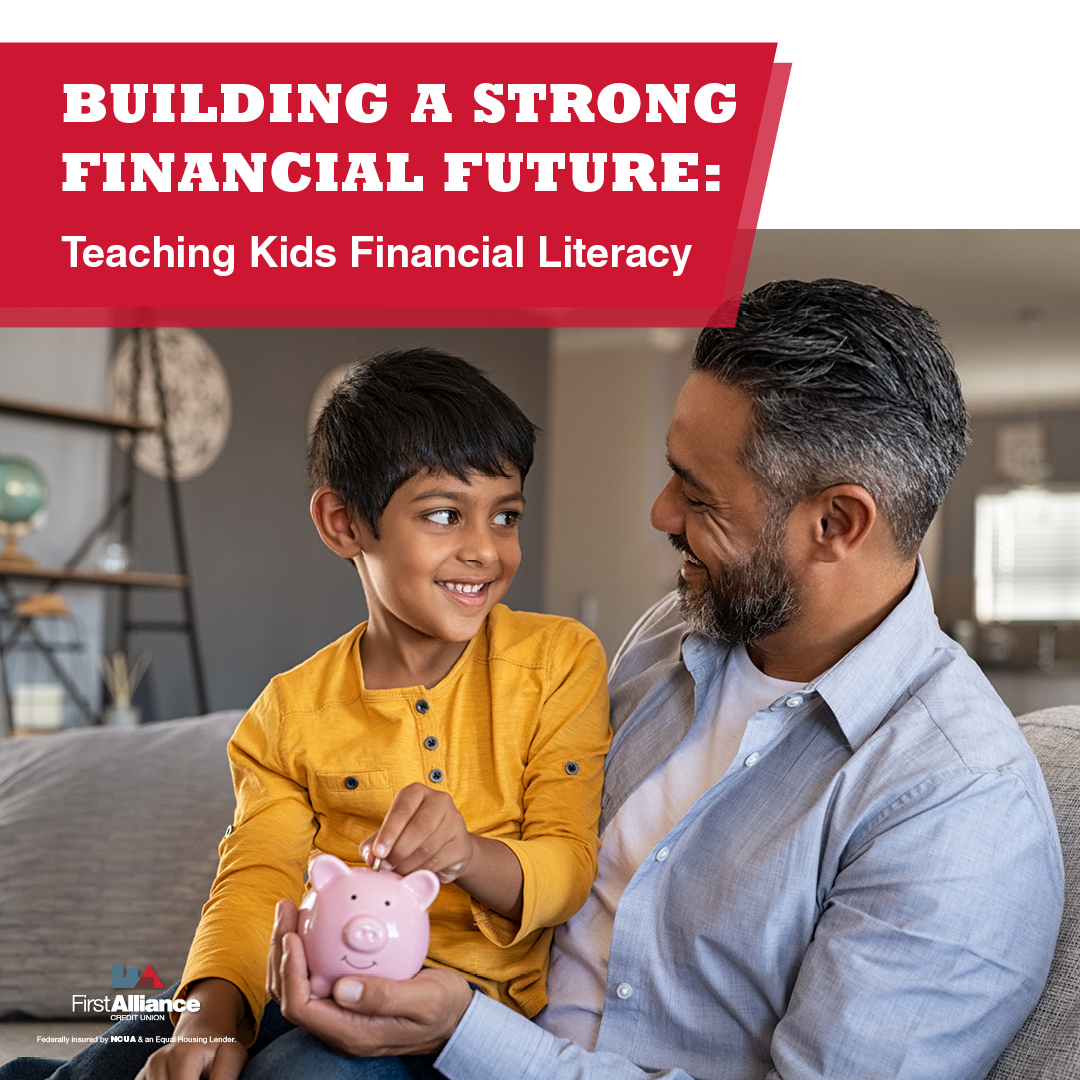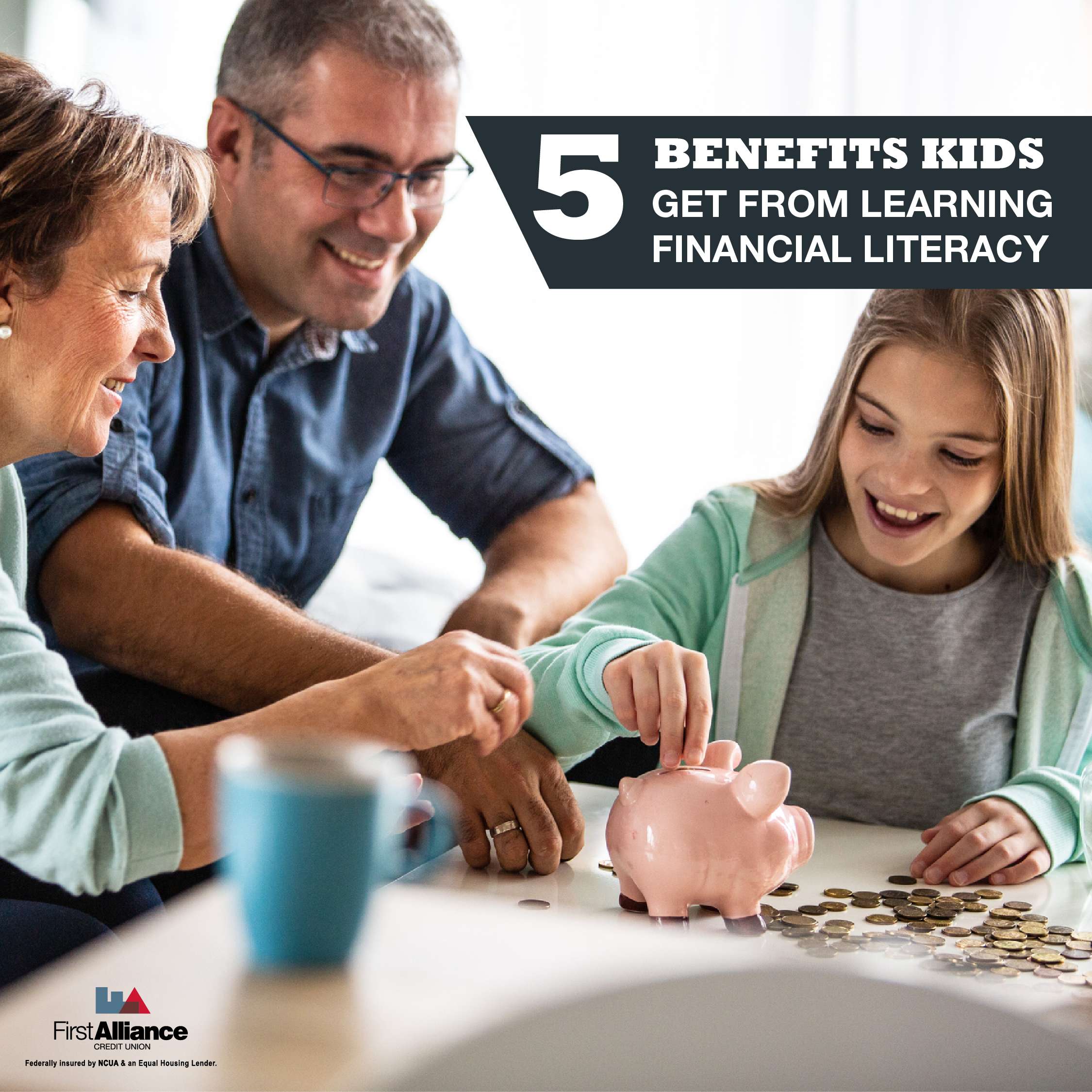Helping Your Kids Deal With a Financial Crisis
Even with unemployment and national debt at all-time highs, it's still shocking when your family faces a job loss or other financial setback. Most of...

When we teach our children to have a solid understanding of money, we’re setting them up for financial success as teens and adults. One of the best ways to start is by teaching them the three key financial concepts they’ll need to understand and adhere to in order to make good financial decisions later in life.

Children need to understand that money is finite—once it’s gone, it’s gone. There isn’t a tiny printing press inside an ATM that spits out cash if you ask nicely. Children also need to understand that if you want to get more money, you'll have to work to earn it.
This financial concept can be taught by paying children an allowance for household chores, although if they are a little older they could also start a lemonade stand. You can also begin discussing your household budget with them. Show your children your banking account online, then explain to them you go to work every day to earn a paycheck to pay for things the family needs, like food and clothing.
Once your child understands that money has to be earned before it can be spent, the next concept to introduce is how to make choices about what to spend your money on. It’s important to explain to your children that if they work hard for their money, they should make sure they are spending it wisely and making good choices with their limited funds.
You can help your kids learn this financial concept by encouraging them to split their money into two categories: spending and saving. You can also help them prioritize the items they want to spend their money on and help them set savings goals for the items they can’t yet afford. This helps them understand how to make their money work for both short term and long term goals.
This concept can be difficult to teach kids sometimes because all of their needs (food, clothing, shelter) are already met by you, their parent. However, you can still begin to talk about the concept with them.
To introduce the concept of need versus want to your kids, start asking them to look at what’s in your grocery cart at the store. Sweet treats are typically a want, whereas basic items like milk, bread and cheese are a need. Have them help you add up the cost of the need items compared to the want items and see if they can both fit into the total amount you have to spend on your groceries. If not, have them help you choose which of the want items should be put back.
One of the best ways to teach your children about appropriately managing their finances is to show them how you’re applying the above financial concepts in your day to day life. However, there are other fun activities you can do to help your kids learn these concepts.
Read books about money management with your kids. Here are a few good options, but there are many more out there.
Every kid these days has access to a tablet or smart phone, so use that technology to your advantage. There are a lot of great apps that can help teach your kids financial literacy.
There are also a few great videos your kids can watch to help them learn important financial concepts. Make sure to have a discussion about the videos with your kids afterwards to help them apply the content to real life.
Teaching your kids how to manage their money is the best gift you can ever give them. It can make the difference between your kids living a financially secure life or joining the 39% of Americans who have little to no savings at all.
If you want to help your children put these key concepts into practice, open up a youth savings account at First Alliance Credit Union today. Children can watch their accounts grow as they deposit money they earned, and start making choices about how to use the money they’ve saved up.
Don’t assume your kids will learn these skills and concepts somewhere else—you are their best teacher for financial literacy.
.jpg)
Even with unemployment and national debt at all-time highs, it's still shocking when your family faces a job loss or other financial setback. Most of...

April is Youth Month at First Alliance Credit Union, and there's no better time to dive into one of the most crucial topics for young people:...

When you teach your kids financial literacy—the knowledge and skills you need to make effective, informed decisions about money management—you're...